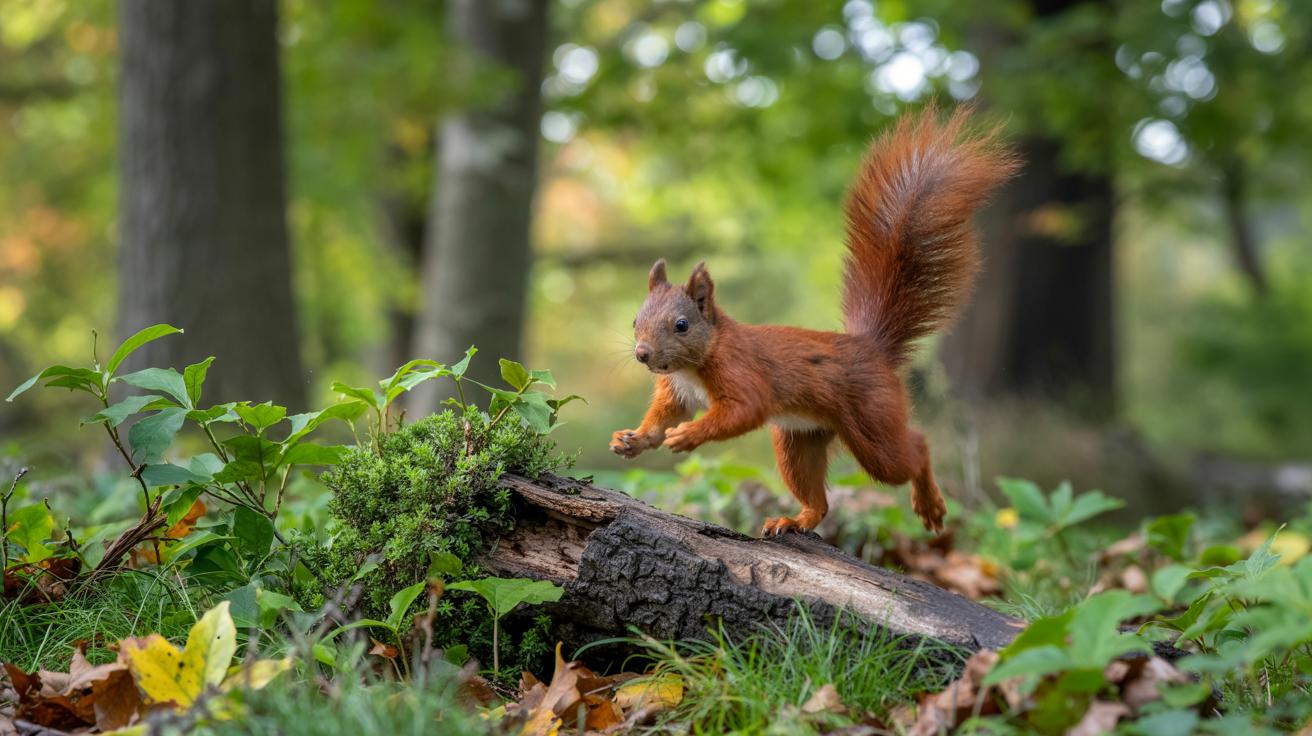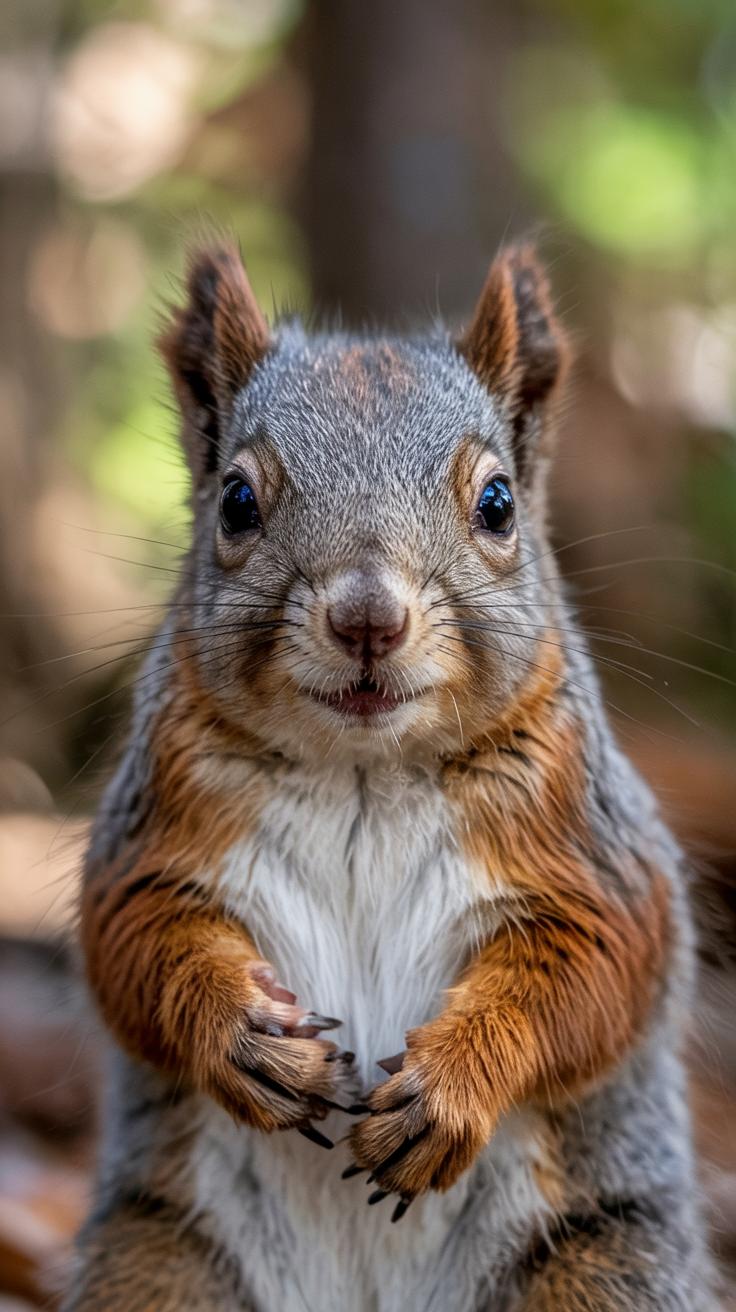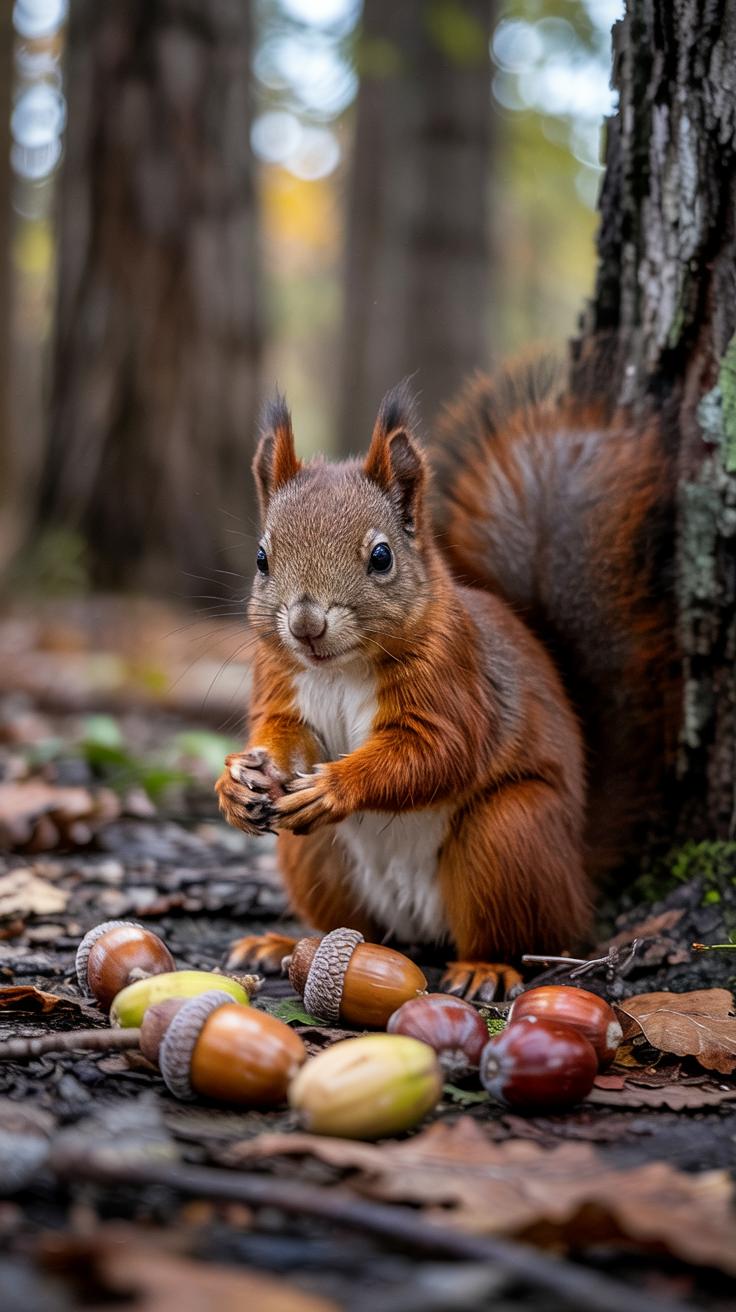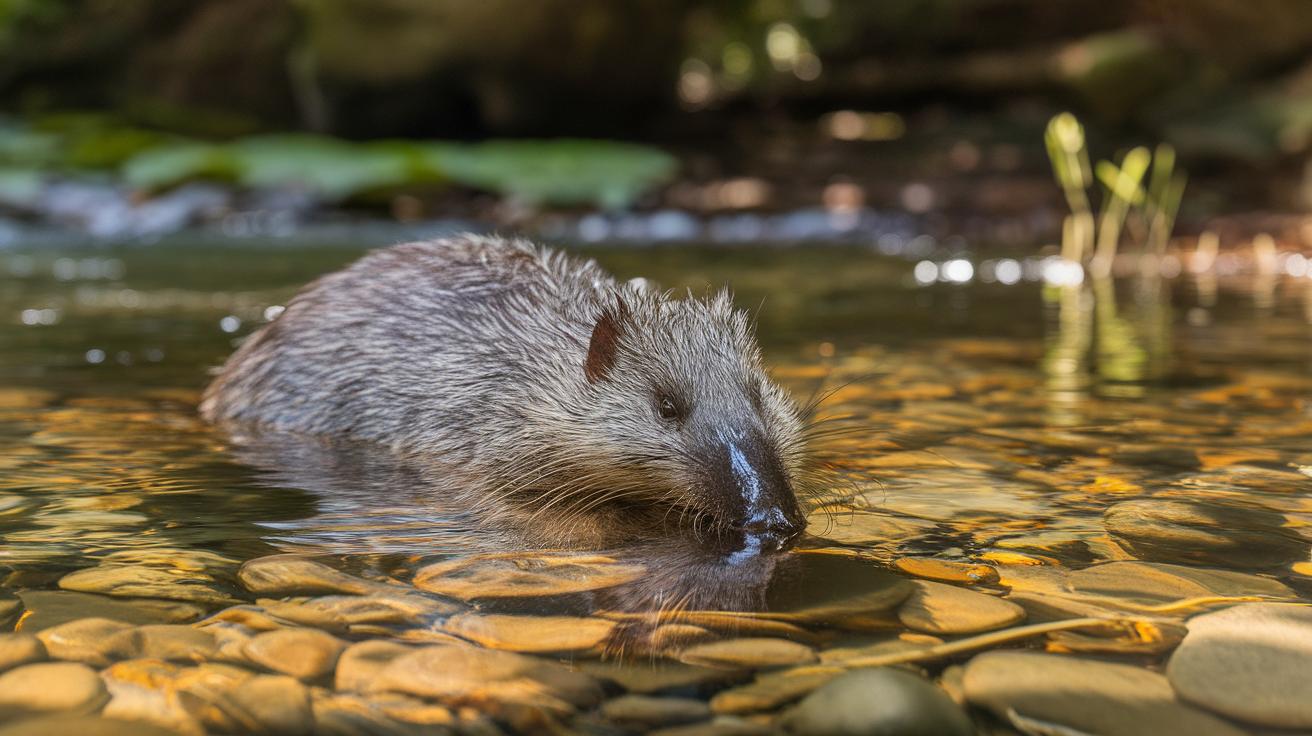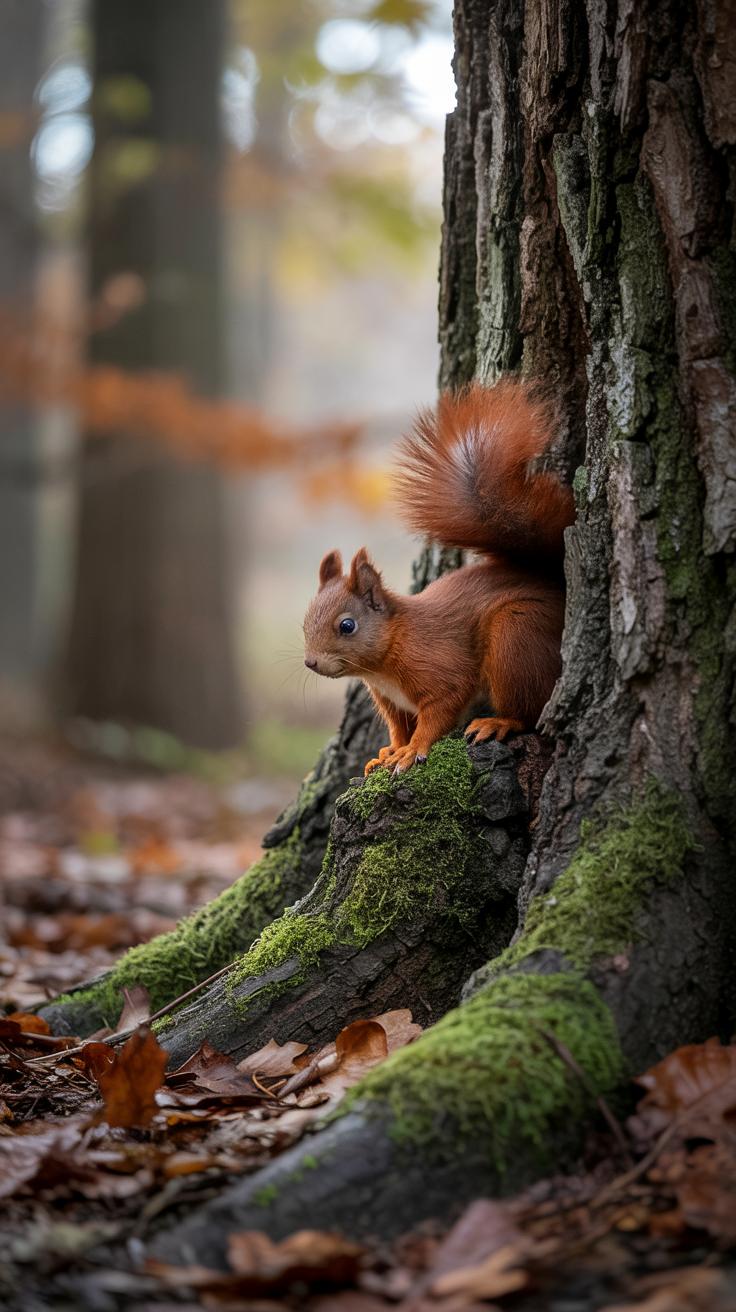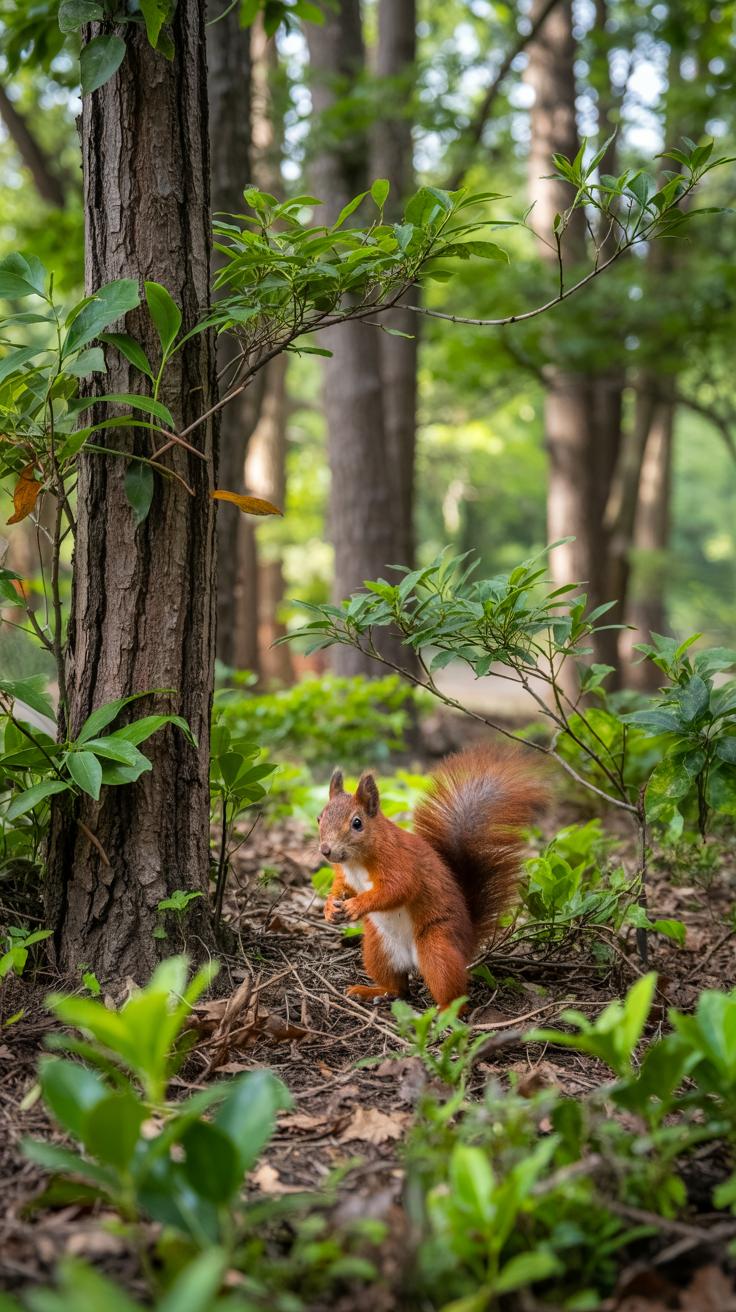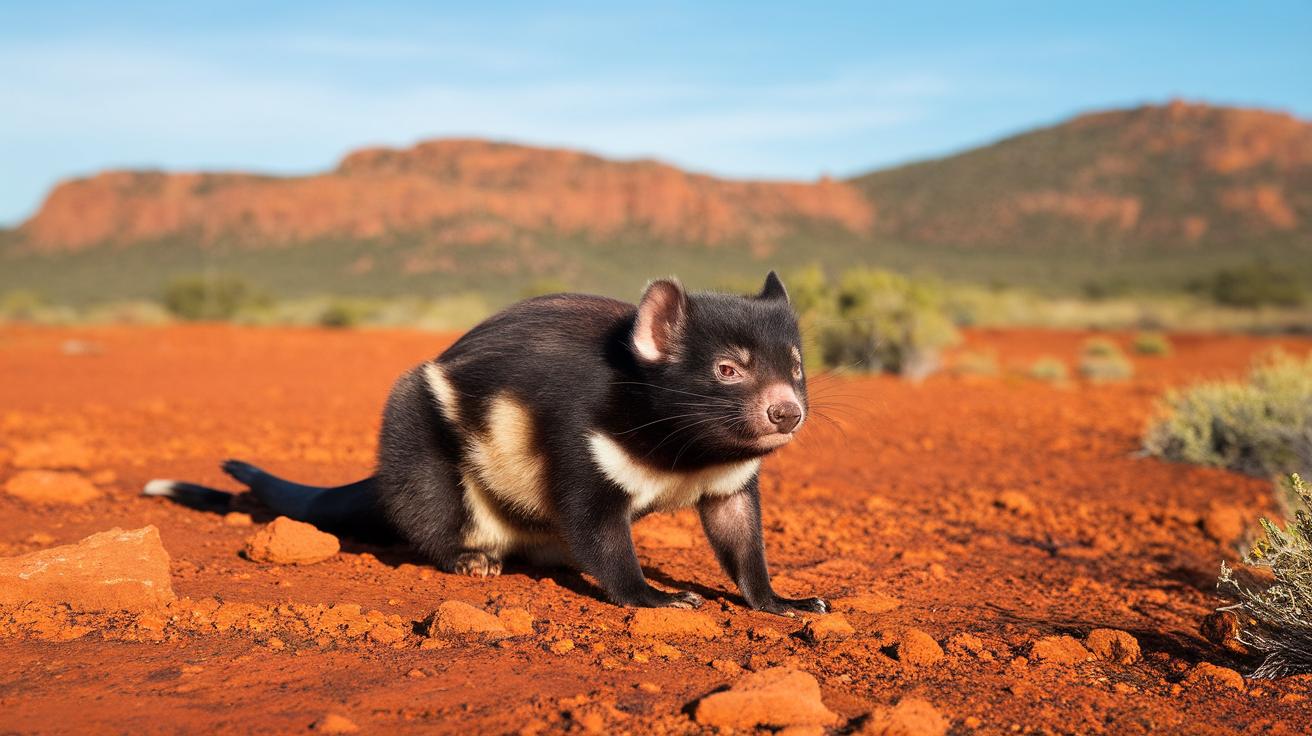Introduction
The red squirrel (Sciurus vulgaris) is a fascinating species that is known not only for its distinct appearance but also for its significant ecological role. Found throughout Eurasia, this arboreal rodent thrives in various forest habitats, from coniferous woods to broad-leaved forests. Red squirrels are primarily herbivorous, feeding on nuts, seeds, fruits, and tree bark, making them essential for forest regeneration. This article aims to explore the enchanting life of red squirrels, from their behaviors and physical characteristics to the challenges they face in their natural habitat.
Understanding the red squirrel requires delving into its unique adaptations, social structures, and the interplay between its lifestyle and ecosystem. The red squirrel’s adaptability is evident in its varied coat colors, which change with the seasons, helping it camouflage among the foliage. Through captivating tales and insights, we will uncover the significance of red squirrels in their environment, the threats posed by invasive species, and conservation efforts aimed at preserving this remarkable creature. Join us in a journey through the wild where these creatures create their narratives.
The Biological Characteristics of Red Squirrels
Physical Traits of Red Squirrels
Red squirrels exhibit distinct biological characteristics that make them easily recognizable. Adult red squirrels typically measure between 9 to 12 inches in body length, with tails that add another 6 to 8 inches. The fur color is predominantly a rich, reddish-brown, though variations can appear depending on the season and habitat. For instance, in winter, their fur may shift to a grayer shade to provide better camouflage against the snowy backdrop. These adaptations enable them to thrive in different environments.
Adaptations in the Wild
Several physical traits enhance their survival. Sharp claws allow red squirrels to navigate tree trunks and branches effortlessly, while their bushy tails serve multiple purposes, including balance during agile leaps and insulation in colder temperatures. The population of red squirrels in varied regions often showcases evolutionary adaptations, such as differences in fur density or coloration, reflecting their environmental needs. Such biological features play a crucial role in their ability to find food, evade predators, and thrive in diverse ecosystems, affirming the red squirrel’s status as a resilient species in the wild.
Habitat Preferences and Distribution Examining the Diverse Environments of Red Squirrels
Understanding Habitat Choices Across Eurasia
Red squirrels are adaptable creatures, thriving in a variety of habitats across Eurasia. Dense coniferous and mixed forests provide the ideal setting, offering them abundant food sources and nesting sites. The European red squirrel, for example, is predominantly found in pine forests, where it forages for pine cones and seeds. In contrast, the Eurasian variety often inhabits broadleaf forests, capitalizing on acorns and other nuts. Urban areas also serve as unexpected habitats, with parks and green spaces allowing for a unique coexistence with people, although these settings can be fraught with dangers like road traffic and predation.
Geographical Distribution Patterns
Across different geographical regions, variations in climate and vegetation significantly influence red squirrel distribution. In northern regions, they prefer boreal forests characterized by cooler temperatures and conifer dominance. Meanwhile, southern populations may venture into more temperate zones, where deciduous trees prevail. This wide spatial distribution helps maintain the species’ resilience in changing environments, as adaptability to different habitats plays a pivotal role in their survival strategy. Understanding these patterns offers insights into conservation efforts essential for protecting their natural habitats from encroachment and habitat loss.
Feeding Habits and Diet Analyzing the Diet of Red Squirrels and Their Role in Forest Ecosystems
Red squirrels primarily consume seeds and nuts, making them vital participants in forest ecosystems. Their diet predominantly consists of conifer seeds, particularly from pine, spruce, and fir trees, but they also enjoy a range of other foods, including fruits, fungi, and even tree bark when necessary. This diverse menu allows them to adapt to seasonal changes in food availability, showcasing their resourcefulness.
Their habit of caching food—storing surplus nuts and seeds in various locations—serves a dual purpose. Not only does it provide sustenance during winter months, but it also plays a significant role in forest regeneration. Forgotten caches can sprout into new trees, fostering a healthier environment for future generations of squirrels, plants, and other wildlife.
Reproduction and Lifespan An Investigation into the Breeding Habits of the Red Squirrel
Breeding Habits of Red Squirrels
During the spring and summer months, red squirrels engage in diverse mating behaviors that reflect their adaptable nature. Males seek out females using scent trails, signaling their presence through a series of vocalizations. Courtship involves chasing and displaying, where males vie for the attention of potential mates. A female typically breeds once or twice a year, giving birth to litters that usually consist of two to four kits. The gestation period lasts about 36 days, with the young born blind and entirely dependent on their mother. This nurturing phase is crucial, as the kits begin to explore their surroundings after just a few weeks, honing their survival skills in a protective environment.
Lifespan and its Influences
The lifespan of a red squirrel in the wild can reach an impressive six to eight years, although numerous factors can impact their longevity. Predation, habitat loss, and food scarcity during harsh seasons pose significant threats. After weaning, juveniles quickly learn to forage, contributing to their adaptability in changing environments. The intricate relationship between their diet and habitat plays a critical role in shaping their survival and reproductive success. During their life cycle, red squirrels exhibit a remarkable degree of resilience, adapting behaviors that ensure their persistence in the face of environmental challenges.
Social Behaviors and Interactions Understanding the Social Structures of Red Squirrels
Interactions Within Species
Red squirrels exhibit a complex array of social behaviors that are pivotal for their survival and reproduction. While they are often perceived as solitary creatures, they do engage in social interactions, particularly during the breeding season. Males will compete for the attention of females, showcasing their agility through agile leaps and vocalizations. These displays not only attract mates but also establish social hierarchies, which can impact access to resources such as food and nesting sites.
Territoriality and Communication
Territory plays a significant role in the social dynamics of red squirrels. Each squirrel establishes and defends a defined area to safeguard its food stores. Vocalizations, such as warning calls and mating chirps, serve as vital communication tools that convey information about potential threats and courtship intentions. This intricate communication system underpins their social structure, allowing them to coexist and reduce direct conflict when possible. These behavioral patterns establish a foundation for their interactions as they navigate the challenges posed by predators and environmental changes.
Predators and Threats Natural Predators of Red Squirrels
The red squirrel faces a variety of natural predators that pose significant threats to their survival. Among these, birds of prey such as goshawks and owls are the most formidable. They utilize their keen eyesight and swift hunting skills to capture unsuspecting squirrels. Ground predators, including foxes and domestic cats, can also pose dangers, especially to young or inexperienced red squirrels. These predators often exploit the squirrels’ foraging behaviors, catching them off guard as they search for food.
Challenges in Their Environment
Beyond natural predators, red squirrels encounter numerous challenges in their habitats. Habitat loss due to deforestation and urbanization diminishes their living spaces and food sources. The introduction of invasive species, particularly the eastern gray squirrel, further threatens their population by competing for resources and spreading diseases. These challenges necessitate a deeper understanding of their ecology, as the ongoing pressures from both natural predators and human activities impact their survival and social structures.
Conservation Status The Protection of Red Squirrels
The Peril of Decline
Red squirrels, once abundant across Europe and parts of Asia, now face significant challenges leading to a declining population. The primary threats include habitat loss, competition with the grey squirrel, and diseases such as squirrelpox, which the native species is vulnerable to. Cultural and urban development has resulted in fragmented habitats, restricting their movement and access to food sources. These issues have escalated conservation concerns regarding their long-term survival.
Efforts in Conservation
Numerous conservation initiatives aim to protect red squirrels and improve their habitats. Organizations have taken steps to create wildlife corridors, manage woodland areas, and implement programs that reduce grey squirrel populations to decrease competition. Additionally, public awareness campaigns educate communities on the importance of preserving these creatures. Collaboration among conservation groups, government entities, and local communities is essential to ensure red squirrels can thrive in the wild once more.
Myths and Cultural Significance The Role of Red Squirrels in Folklore and Tradition
Cultural Symbolism and Narrative
Throughout various cultures, red squirrels have often served as symbols of cleverness and resourcefulness. Folk tales portray them as agile tricksters, embodying qualities admired by many societies. In Native American culture, these creatures represent community and shared resources, reflecting their behavior of storing food for the winter. In Europe, tales of red squirrels often align them with the changing seasons, embodying the cycle of life and rebirth. The vibrant hue of their fur further inspires artistic representation, making them subjects in paintings and sculptures.
Folklore and Watching
Many cultures have associated red squirrels with omens or superstitions. For instance, seeing a red squirrel may be interpreted as a sign of upcoming changes in one’s life. Additionally, these creatures appear in children’s literature, teaching lessons on preparation and adaptability in the face of nature’s challenges. As the red squirrel continues to capture the human imagination, it serves as an enduring emblem of resilience, reminding us of the interconnectedness of nature and culture, especially as efforts to support their conservation become increasingly crucial for future generations.
The Role of Red Squirrels in Ecosystem Health
Impact on Forest Dynamics
Red squirrels play a pivotal role in maintaining the health of their forest ecosystems. By foraging for seeds and nuts, they contribute to seed dispersal, which is vital for plant regeneration. This behavior ensures a diverse undergrowth, allowing various plant species to thrive. As they bury food in different locations, these squirrels inadvertently nurture new tree growth, supporting forest health and stability. Their activities help regulate plant populations, maintaining a balanced environment that supports a variety of wildlife, from insects to larger mammals.
Interactions with Other Species
Beyond their direct influence on vegetation, red squirrels foster complex relationships with other wildlife. Their activity attracts various birds and small mammals that rely on similar food sources. Predators, such as hawks and foxes, also thrive on the abundance fueled by squirrel populations. Additionally, the presence of red squirrels can indicate a healthy, thriving ecosystem, as their survival requires a balanced interplay of food, habitat, and climate. By understanding these relationships, we gain insight into the delicate ecosystems they inhabit—a tapestry of life interwoven through the actions of these vibrant creatures.
Future of Red Squirrels Speculate on the Future Survival of Red Squirrels in Changing Environments
Adapting to a Shifting World
As climate change and habitat loss continue to reshape forest environments, red squirrels face significant challenges that will test their resilience. Increasingly unpredictable weather patterns can disrupt the cycles of tree seed production, which is vital for the red squirrel’s diet. Adaptation will hinge on their ability to migrate to more suitable habitats or adjust their foraging behaviors to optimize food availability.
Impact of Urbanization and Competition
Urban development adds further strain, fragmenting habitats and increasing encounters with humans. In areas where red squirrels coexist with the invasive grey squirrels, competition for resources intensifies, threatening their survival. Conservation efforts, including habitat restoration and the establishment of wildlife corridors, may prove essential in ensuring that red squirrels thrive in environments increasingly dominated by urban landscapes and competing species.
Conclusions
The red squirrel is more than just a charming woodland creature; it serves as an indicator of the health of our forest ecosystems. With its unique lifestyle and ecological significance, the red squirrel plays a vital role in maintaining forest biodiversity through seed dispersal and habitat creation. However, the survival of this species is increasingly threatened due to habitat loss, competition from grey squirrels, and climate change, highlighting the urgent need for conservation efforts.
The tales of red squirrels remind us of the interconnectedness of wildlife and the environment. As we foster a deeper appreciation for these animals, it becomes imperative to advocate for their conservation. By protecting the habitats of red squirrels, we not only safeguard their future but also enhance the overall health of our forests, ensuring that future generations can continue to enjoy the beauty of nature’s narratives.

